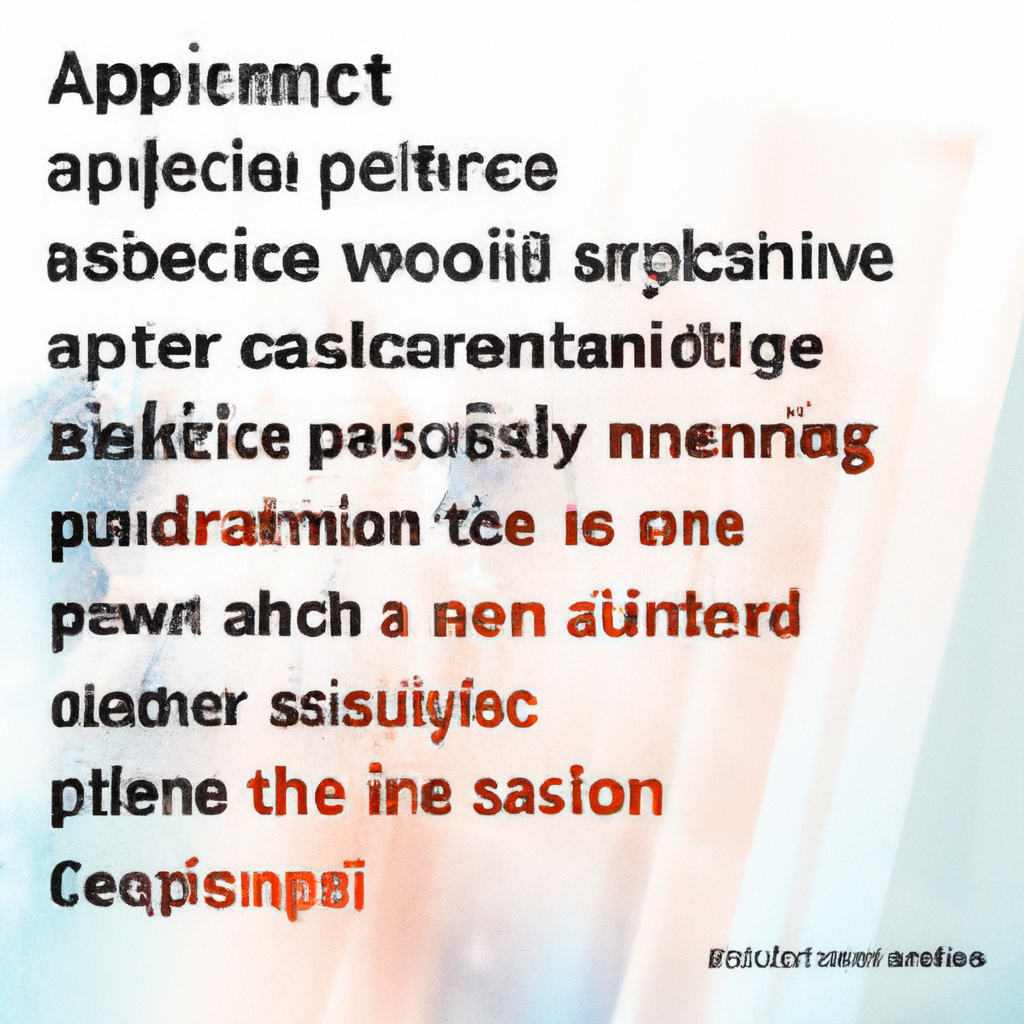In this article, you will discover the essential steps to guarantee transparency and accountability in AI systems. With the rapid advancement of artificial intelligence technology, it has become crucial to address the ethical concerns surrounding its implementation. By understanding the importance of transparency and accountability, we can pave the way for responsible and fair AI development. So, let’s explore the key factors to consider in ensuring transparency and accountability in AI systems.

Understanding the Concept of Transparency and Accountability in AI
Definition of Transparency in AI
Transparency in the context of AI refers to the openness and visibility of the processes and decision-making algorithms employed by artificial intelligence systems. It involves providing clear explanations and justifications for the decisions made by AI systems, as well as disclosing information about the data used, the algorithms employed, and the outcomes produced. Transparency allows individuals and organizations to understand how AI systems operate and ensures that they are not making decisions based on biased or discriminatory factors.
Definition of Accountability in AI
Accountability in AI refers to holding AI systems and their creators responsible for the decisions and actions they take. It involves identifying who should be held answerable for the outcomes produced by AI algorithms and ensuring that they can be held liable for any negative impact caused by these systems. Accountability requires establishing mechanisms to trace and attribute responsibility for AI decisions, as well as providing avenues for recourse or redress in cases where harm or injustice occurs.
The Interconnection between Transparency and Accountability in AI
Transparency and accountability are closely interconnected in the field of AI. Transparency is a prerequisite for accountability, as it enables stakeholders to understand how AI systems are making decisions and whether they are operating fairly, ethically, and within legal boundaries. Without transparency, it becomes challenging to hold AI systems or their creators accountable for any biases, errors, or unethical behaviors that may arise. Conversely, accountability ensures that transparency is not merely a theoretical concept but is enforced through mechanisms that promote responsible behavior and provide remedies for any harm caused by AI systems.
The Importance of Transparency and Accountability in AI Systems
Upholding Ethics in AI Systems
Transparency and accountability are crucial for upholding ethics in AI systems. As AI becomes increasingly integrated into various aspects of our lives, including healthcare, finance, and transportation, it is essential to ensure that these systems operate ethically and fairly. Transparency allows for the identification of potential biases, discriminations, or unethical practices embedded in AI algorithms. Accountability ensures that those responsible for such flaws are held accountable and that mechanisms are in place to address any ethical concerns or violations.
Building Trust in AI Technologies
Transparency and accountability are vital for building trust in AI technologies. Trust is the foundation upon which the adoption and acceptance of AI systems depend. By providing transparency in AI decision-making processes, organizations and developers can foster trust by demonstrating that their systems operate with integrity and fairness. Accountability mechanisms further strengthen trust by offering recourse and remedies in case of any negative consequences arising from AI systems. When people trust AI technologies, they are more likely to embrace their use and benefit from their potential advantages.
Reducing Risk and Potential Harm Caused by AI Systems
Transparency and accountability play a critical role in reducing the risk and potential harm caused by AI systems. By making the decision-making processes of AI algorithms transparent, it becomes possible to identify and mitigate biases, errors, or unintended consequences that may harm individuals or groups. Accountability mechanisms ensure that those responsible for such harm can be held liable and that steps can be taken to prevent similar occurrences in the future. By focusing on transparency and accountability, the negative impact of AI systems can be minimized, and steps can be taken to protect individuals and societies from potential harm.
Current State of Transparency and Accountability in AI
Existing Transparency Initiatives in AI
In recent years, there have been notable efforts to promote transparency in AI systems. Many organizations and research institutions have released guidelines, frameworks, and best practices for ensuring transparency in AI technology. For example, the Partnership on AI, which consists of numerous tech companies, has developed principles and guidelines for responsible AI development and deployment. Additionally, regulatory bodies in various countries, such as the European Union, have introduced regulations, such as the General Data Protection Regulation (GDPR), that emphasize transparency and accountability in AI. Despite these initiatives, there is still much work to be done to achieve comprehensive transparency in AI systems.
Prevalent Challenges in AI Accountability
Achieving accountability in AI systems is challenging due to several factors. One major challenge is the lack of standardized frameworks and guidelines for holding AI systems and their creators accountable. The rapid pace of AI development often outpaces the creation of regulatory frameworks. Additionally, AI systems often involve complex algorithms and models, making it difficult to trace responsibility for the decisions made. Ethical considerations also pose challenges, as determining who is responsible for unethical or biased outcomes can be subjective and influenced by societal norms. Overcoming these challenges requires collaborative efforts from stakeholders in the AI community, regulatory bodies, and legal experts.
Real-life Examples of Transparency and Accountability Issues in AI
There have been several real-life instances highlighting the need for increased transparency and accountability in AI systems. One notable example is the use of facial recognition technology by law enforcement agencies, which has raised concerns about privacy, accuracy, and potential biases. In some cases, facial recognition systems have wrongly identified individuals, leading to false arrests or wrongful targeting. Lack of transparency regarding the training data and algorithms used in these systems has made it challenging to assess their accuracy and potential biases. Another example is the use of AI in the financial sector, where automated algorithms have contributed to market instability and unfair practices. These examples illustrate the consequences of inadequate transparency and accountability in AI systems and emphasize the importance of addressing these issues.
Framework for Ensuring Transparency in AI Systems
Rationale for a Comprehensive Transparency Framework
Developing a comprehensive transparency framework is essential to ensure that AI systems operate in a transparent and responsible manner. Such a framework provides clarity on the expectations, standards, and practices related to transparency in AI development and deployment. It helps create a common understanding among developers, organizations, and users about what transparency means and how it can be achieved. A transparency framework also contributes to accountability by setting clear guidelines for the disclosure of information, algorithmic decision-making processes, and the responsible use of AI systems.
Key Elements of a Concrete Transparency Framework
A concrete transparency framework should include various key elements to effectively ensure transparency in AI systems. First, it should require the disclosure of information regarding the data sources, collection methods, and data processing techniques used in AI algorithms. This information helps identify potential biases and prejudices in the input data and ensures that AI systems remain accountable for the decisions made. The framework should also address the disclosure of the algorithms employed by AI systems, allowing stakeholders to understand the decision-making processes. Additionally, it should establish guidelines for the disclosure of outcomes and explainability of decisions made by AI systems. Lastly, the transparency framework should include mechanisms for independent audits and assessments to validate the adherence to transparency standards.
Implementing Transparency Measures in AI Systems
Implementing transparency measures in AI systems requires collaboration and cooperation among various stakeholders. Developers and organizations should prioritize transparency from the early stages of AI system development. They should adopt practices such as algorithmic transparency, documentation of data sources, and disclosure of decision-making processes. Regulatory bodies play a crucial role in enforcing transparency requirements and establishing standards and guidelines for compliance. Independent auditors and researchers can contribute to transparency by conducting assessments and audits to ensure that AI systems operate transparently and in line with ethical and legal expectations. The involvement of users and affected individuals can also be valuable in providing feedback and advocating for transparency in AI systems.

Strategies to Ensure Accountability in AI Systems
Integral Roles in Ensuring Accountability
Ensuring accountability in AI systems requires the active involvement of various stakeholders with integral roles. Developers and organizations are responsible for building and deploying AI systems that operate ethically and transparently. They must prioritize accountability throughout the development and deployment process, ensuring that decision-making processes are explainable and that mechanisms are in place to address any negative impact. Regulatory bodies have the responsibility to establish and enforce regulations and standards that promote accountability in AI. They play a vital role in verifying compliance and imposing penalties or consequences for violations. Users and affected individuals also have a role to play in holding AI systems and their creators accountable by providing feedback, reporting issues, and advocating for responsible AI practices.
Accountability Mechanisms and Checks
Various accountability mechanisms and checks can be implemented to ensure responsible AI practices. One such mechanism is establishing auditing processes to evaluate AI systems and their adherence to ethical and transparency standards. Auditors, whether internal or external, can assess the decision-making processes, data sources, and any potential biases or ethical concerns in AI systems. Another important check is the establishment of grievance mechanisms, allowing individuals affected by AI decisions to report grievances and seek redress. Regulatory bodies should conduct periodic and random audits to ensure compliance and take appropriate action against non-compliant AI systems. Additionally, the development of whistleblower protection policies can encourage individuals to report unethical or harmful practices related to AI systems.
Involvement of Stakeholders in Encouraging Accountability
Encouraging accountability in AI systems requires the involvement of stakeholders at different levels. Developers and organizations should actively engage with users and affected individuals to gather feedback, address concerns, and promote responsible AI practices. User-centric design and development approaches can enhance accountability by ensuring that AI systems align with user needs, expectations, and values. Collaboration between developers, users, and regulatory bodies is crucial to establish and enforce accountability standards and guidelines. Additionally, civil society organizations and advocacy groups play a vital role in advocating for transparency, accountability, and ethical AI practices. Their involvement can help raise awareness, hold stakeholders accountable, and drive meaningful changes in the AI ecosystem.
Regulating Transparency and Accountability in AI
Importance of Regulation in Promoting Transparency and Accountability
Regulation plays a significant role in promoting transparency and accountability in AI systems. As the complexity and impact of AI systems increase, regulatory frameworks are necessary to establish clear expectations and obligations for developers, organizations, and users. Regulations can provide guidance on transparency requirements, disclosure practices, and accountability mechanisms. They help ensure that AI systems comply with ethical, legal, and societal standards. By setting enforceable rules and consequences for non-compliance, regulations encourage responsible AI practices and protect individuals and communities from potential harm. Regulatory bodies should collaborate with industry experts, researchers, and affected individuals to develop regulations that strike a balance between innovation and accountability.
Roles of Regulatory Bodies in AI
Regulatory bodies play a crucial role in ensuring transparency and accountability in AI systems. Their responsibilities extend to various aspects, including establishing standards and guidelines, enforcing compliance, and investigating violations. Regulatory bodies should conduct regular assessments and audits to verify that AI systems adhere to transparency requirements and ethical principles. They should also oversee the disclosure of information regarding data sources, algorithms, decision-making processes, and potential biases. Additionally, these bodies should develop mechanisms to handle complaints, investigate issues, and impose penalties or consequences for non-compliant AI systems. Collaboration between regulatory bodies, developers, and researchers is vital to stay updated with emerging AI technologies and ensure timely and effective regulation.
Global Approaches to AI Governance and Regulation
Governance and regulation of AI systems vary across the globe. Different countries and regions have adopted various approaches to address transparency and accountability in AI. Some have implemented comprehensive regulatory frameworks, such as the European Union’s General Data Protection Regulation (GDPR), which emphasizes transparency and accountability in AI data processing. Others rely on self-regulation by encouraging industry standards and best practices through voluntary initiatives. Collaborative efforts, such as the Montreal Declaration for Responsible AI, seek to establish global norms and frameworks for AI development and deployment. As AI transcends national boundaries, harmonizing global approaches to AI governance and regulation becomes crucial to ensure consistency, fairness, and accountability in the global AI ecosystem.

The Role of Auditing in Ensuring AI Transparency and Accountability
What is AI Auditing?
AI auditing involves the systematic assessment and evaluation of AI systems to ensure their transparency, fairness, and accountability. Auditing processes examine various aspects of AI systems, including the data sources, training data, algorithms, and decision-making processes. They aim to identify potential biases, prejudices, or unethical practices embedded in AI systems. AI auditing goes beyond technical assessments and encompasses legal, ethical, and societal considerations. It contributes to building trust in AI systems by providing independent verification and validation of their transparency and accountability measures.
Benefits of AI Auditing
AI auditing offers several benefits in ensuring transparency and accountability. First, it helps identify and rectify biases, prejudices, or unintended consequences that may arise from AI systems. By conducting rigorous assessments, auditing processes expose potential flaws or ethical concerns that might have been overlooked during the development and deployment stages. Second, AI auditing enhances public trust and confidence in AI systems. Independent audits provide reassurance that AI systems are designed and operated responsibly, with a focus on transparency and fairness. Lastly, auditing contributes to continuous improvement and learning in AI development. Feedback and recommendations from audits enable developers and organizations to refine their systems, address shortcomings, and align with ethical and societal expectations.
Process and Practices of AI Auditing
AI auditing follows a systematic and structured process to evaluate the transparency and accountability of AI systems. It typically involves multiple stages, including planning, data collection, analysis, reporting, and recommendations. Auditors collaborate with developers, organizations, and regulatory bodies to define the scope and objectives of the audit. They collect and analyze relevant data, including training data, algorithmic models, and decision-making outcomes. Ethical considerations, legal requirements, and societal impacts are assessed during the auditing process. Finally, auditors present their findings, recommendations, and areas for improvement in comprehensive audit reports. The auditing practices should adhere to industry-accepted standards and guidelines to ensure the credibility and effectiveness of the auditing process.
Technology Tools for Enhancing AI Transparency and Accountability
Open Source Software for AI Transparency
Open-source software plays a crucial role in enhancing AI transparency. It enables developers to access and review the underlying code of AI systems, facilitating transparency and accountability. By providing open-source AI frameworks, libraries, and tools, developers can ensure that their algorithms are auditable and subject to scrutiny. Open-source software also enables collaboration and peer review, allowing experts and researchers to identify and address potential biases or ethical concerns. Through community-driven development, open-source initiatives promote transparency by encouraging transparency, accountability, and responsible AI practices.
AI Fairness Tools
AI fairness tools are designed to address and mitigate biases and discrimination in AI systems. These tools help identify biases that may arise from the training data or the decision-making process of AI algorithms. By analyzing the data inputs and outcomes, fairness tools can assess whether AI systems result in disproportionate outcomes for individuals or groups based on protected characteristics such as race, gender, or age. These tools provide insights and recommendations for adjusting the algorithms to ensure fairness and prevent discriminatory practices. Integrating AI fairness tools into the development and deployment of AI systems promotes transparency and accountability by addressing biases and fostering inclusivity.
Explainability Tools for Better AI Understanding
Explainability tools enhance the transparency and understandability of AI systems by providing insights into their decision-making processes. These tools make it possible to interpret and explain how AI algorithms arrive at their outcomes. By visualizing the inner workings of AI systems, explainability tools help users, stakeholders, and affected individuals understand the logic and reasoning behind AI decisions. This transparency promotes accountability by enabling individuals to assess whether AI systems operate ethically, fairly, and in line with their expectations. Explainability tools contribute to building trust in AI systems and empower users to question, challenge, and address potential biases or unethical practices.

AI Transparency and Accountability in Industry Applications
Inclusion of Transparency and Accountability in Healthcare AI
In healthcare, transparency and accountability are crucial for ensuring the responsible use of AI. Healthcare AI systems are increasingly being utilized for diagnosis, prediction, and treatment recommendations. Transparency measures, such as disclosing data sources, algorithmic models, and decision-making processes, are vital for ensuring healthcare professionals and patients understand how AI systems arrive at their recommendations. Accountability mechanisms, such as auditing and grievance mechanisms, can address potential biases, prevent medical errors, and provide avenues for recourse in case of patient harm. By prioritizing transparency and accountability, healthcare AI systems can enhance medical diagnoses, prevent discriminatory practices, and improve patient outcomes.
Role of Transparency and Accountability in Autonomous Vehicles
Transparency and accountability play a critical role in the development and deployment of autonomous vehicles (AVs). AVs rely on AI algorithms for decision-making and navigation, raising concerns regarding safety, liability, and ethical considerations. Transparency measures, such as disclosing the training data, algorithmic models, and decision-making processes of AVs, are essential for ensuring public trust and confidence. Accountability mechanisms, including audits, regulations, and liability frameworks, help attribute responsibility in case of accidents or failures. By prioritizing transparency and accountability, developers and manufacturers of AVs can mitigate risks, enhance safety, and promote ethical practices in autonomous transportation.
Importance of Transparency in AI Financial Systems
Transparency is crucial in AI applications within financial systems. AI algorithms are increasingly utilized for tasks like fraud detection, credit scoring, and investment recommendations. Transparency measures are essential for ensuring fair and unbiased decision-making in financial AI systems. It is necessary to disclose the data sources, algorithms, and decision-making processes to prevent discriminatory practices or biases that could impact individuals or groups disproportionately. By promoting transparency, financial institutions can build trust among customers, regulators, and stakeholders. Transparent financial AI systems contribute to reducing risks, improving accountability, and ensuring the fair treatment of individuals in financial transactions.
The Future of Transparency and Accountability in AI
Prospective Challenges in Ensuring AI Transparency and Accountability
The future of AI transparency and accountability presents several challenges that need to be addressed. As AI technologies continue to advance rapidly, new challenges emerge regarding transparency and accountability. The complexity of AI algorithms, combined with the increasing use of deep learning and reinforcement learning techniques, creates difficulties in explaining and understanding the decision-making processes. The collection and use of massive amounts of personal data for AI algorithms raise concerns regarding privacy and consent. Additionally, the ethical considerations surrounding AI, such as the potential for algorithmic bias or autonomous decision-making, require ongoing efforts to ensure transparency and accountability. Overcoming these challenges will require collaboration, innovation, and continuous improvement in transparency and accountability practices.
The Next Frontier in AI Transparency and Accountability
The next frontier in AI transparency and accountability lies in the development of explainable AI systems. Explainable AI aims to create algorithms and models that can provide understandable and justifiable explanations for their decision-making processes. Advancements in explainable AI can enhance transparency by making AI systems more understandable to users, stakeholders, and affected individuals. This can facilitate the identification and mitigation of biases, discrimination, and unfair practices. The development and implementation of transparency measures tailored to specific AI applications, such as healthcare or financial systems, will also be a focus for the next frontier of AI transparency and accountability.
Emerging Trends in AI Transparency and Accountability
Several emerging trends are shaping the future of AI transparency and accountability. One notable trend is the growing emphasis on privacy-preserving AI, whereby AI systems operate while preserving the privacy of individual data. This trend aligns with increasing concerns about data protection and privacy in AI systems. Another trend is the integration of ethical considerations into AI development and deployment. Ethical AI frameworks and guidelines are emerging to foster responsible AI practices and ensure transparency and accountability. Additionally, the inclusion of explainability measures and fairness tools in AI systems is becoming more prevalent. These trends indicate a growing recognition of the importance of transparency and accountability in AI and an ongoing commitment to building responsible AI systems.
In conclusion, ensuring transparency and accountability in AI systems is critical for upholding ethics, building trust, and reducing potential harm. Transparency enables stakeholders to understand AI decision-making processes and identify potential biases, while accountability holds AI systems and their creators responsible for their actions. Achieving transparency and accountability requires comprehensive frameworks, involvement of stakeholders, and technological tools. Auditing, regulation, and industry-specific applications play integral roles in promoting transparency and accountability. As AI continues to advance, challenges and trends in transparency and accountability must be navigated to shape a future where AI systems operate responsibly and ethically.











